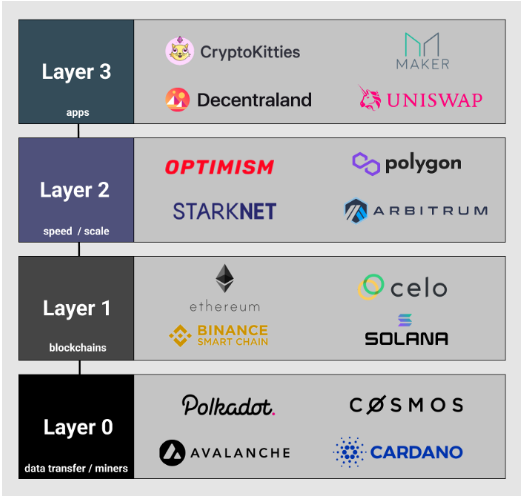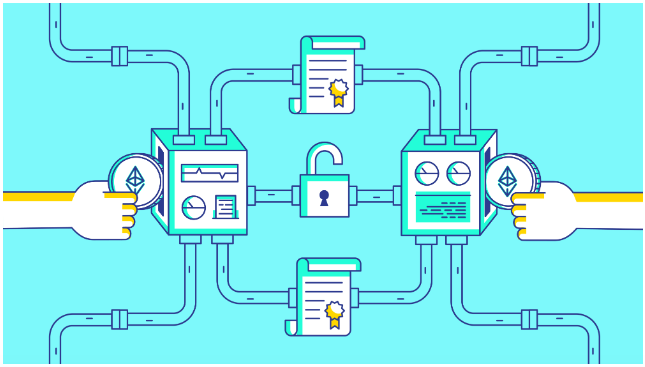You know, blockchain scalability is a popular concept in crypto these days because developers are consistently seeking ways to improve the possibilities of the blockchain.
So, with every new project, you will find an additional technology or feature that will make it outperform its predecessor.
For example, Proof of Stake blockchains were created to improve what was obtainable with Proof of Work blockchains.
And there have been more developments like that in the crypto space.
Basically, scalability is the ability of a blockchain to support an increasing load of transactions.
Also, it means a blockchain can process many transactions in the shortest time possible.
Needless to say, there are different factors that contribute to that success like consensus mechanism, transaction finality, etc.
These factors are manipulated one way or another to achieve scalability.
In this post, I’ll define these factors and other terms that come into the picture when the concept of blockchain scalability (sometimes referred to as “scalability solutions”) is discussed.
That way, you’ll be able to relate whenever you see them.
If you’re ready, let’s jump right in!
Common Blockchain Scalability Terms
Listed below are the blockchain scalability terms that I’ll be defining:
You may click on any term above to read its explanation immediately.
Let’s roll…
1. Blockchain Trilemma

We cannot talk about blockchain scalability without first talking about the blockchain trilemma.
Blockchain trilemma refers to the inability of blockchains to achieve decentralization, security, and scalability at once.
Sadly, every blockchain needs all three factors to thrive but achieving the balance among them has been difficult.
So, what are decentralization, security, and scalability?
Decentralization – giving power to participants across the world to govern a network rather than having a central control of one person or one party.
Security – protecting the network from hacking by making it impossible for a single entity to have control over more than half of the network (51%).
Scalability – refers to how fast a network can grow while maintaining the same level of transaction output and speed.
Usually, one has to be sacrificed for the other two to stand strong.
For example, in trying to achieve decentralization, you need the whole community to participate.
This will delay consensus and in turn reduce scalability.
Meanwhile, decentralization helps secure the network because it will be difficult to manipulate it.
Fun fact: “Blockchain Trilemma” was coined by Vitalik Buterin, the Ethereum founder. Also, it is the major motivation behind blockchain scalability solutions.
[You may also like: Scalability Trilemma: Can The Blockchain Scale Without Making Tradeoffs?]
2. Transactions
In crypto, “transactions” is one term that always appears in every conversation but what does it mean?
Transactions are simply data structures that represent the transfer of value between participants in a blockchain.
Example: Ada sends 1 BTC to Damilare.
And like we saw earlier, blockchain scalability is focused on completing many transactions in the shortest time.
A transaction is complete when it has been confirmed by nodes in a network and added to a block on the blockchain of that network.
3. Nodes
Nodes are a set of computers that run a blockchain’s software to validate and store the complete history of transactions on the network.
The more advanced the nodes, the faster transactions will be completed in the network.
4. TPS
TPS stands for Transactions Per Second.
It refers to the number of transactions that a network is capable of processing in a second.
The more transactions it can process in a second, the more scalable the blockchain is perceived to be.
5. Throughput
Throughput is a measure of how many transactions are completed within a given time frame.
It is commonly expressed in seconds i.e. TPS as we saw earlier.
However, it may also be expressed in minutes (TPM) or hours (TPH).
6. Finality
Whenever you see “finality” think of irreversible.
Finality is the point when parties involved in a transaction can consider it completed.
That is, the transaction has been added to the blockchain and can neither be reverted nor altered.
Also, finality is determined by network latency. 👇
7. Network Latency
Latency refers to how long it takes to broadcast a transaction to all the nodes in a network and collate their responses to achieve consensus.
The lesser the time, the higher the scalability of the network.
8. Blockchain Layers
Put simply, these are the different layers that contribute to the efficiency of a blockchain.
Based on architecture, a blockchain has 5 layers: hardware infrastructure layer, data layer, network layer, consensus layer, and application layer.
But when it comes to scalability, blockchain has advanced from Layer 0 to Layer 3 👇
- 0 – provides the underlying infrastructure for blockchain.
- 1 – where the core functions of the blockchain are carried out
- 2 – works with third-party integration and removes the limitations of layer 1
- 3 – hosts DAapps and provides cross-chain capabilities
Basically, more layers are introduced to reduce the load on the initial layer (0) and achieve scalability faster.
That’s why you see things like “Layer 2 scaling solution on Ethereum blockchain”

For a better understanding of blockchain layers, please read this post – Blockchain Layers Explained: Layer 0, Layer 1, Layer 2, And Layer 3
9. Rollups
Rollups are layer 2 scaling solutions on Ethereum that help process transactions separately from the main network to help increase speed and lower costs.
They operate by rolling up collections of transactions and presenting them to the Ethereum blockchain as a single transaction.

The cost of an Ethereum transaction and the small cost of rolling up batches of transactions is split among users.
Thus, making it cheaper.
Also, rollup is very quick and the Ethereum blockchain ends up with only one transaction to process rather than many.
No doubt, this improves transaction throughput.
In summary, users benefit from the speed and cheapness of the rollup while also enjoying security from the bigger blockchain.
As of 20/08/2022, the two major types of Rollups are Optimistic and Zero-Knowledge (ZK).
You can learn more about rollups here.
10. Sharding
Sharding is a technique that involves partitioning a blockchain network into smaller units called shards.
The goal is to spread out the computational and storage workload of the network across the shards.
Each shard has its data and is independent of other shards.
Sharding boosts scalability because it helps the blockchain to process more transactions per second.
Gratefully, the shards are interoperable, helping to achieve decentralization.
However, sharding has a security problem of “shard corruption”, where one shard takes over another shard, resulting in a loss of data. Oops!
Fun fact: Sharding is one of the upgrades we’re expecting in ETH 2.0. Learn more about it here.
11. State Channels

State Channels are layer 2 solutions that allow a group of participants to perform an unlimited number of private transactions off-chain.
These transactions are not made public but are only visible to participants on the channel.
Only the first and final state of the transactions are recorded in the main blockchain.
This minimizes the use of ‘on-chain’ operations thus improving scalability.
It is one of the Ethereum scaling solutions still under development.
State channels are similar to the concept of payment channels in Bitcoin’s Lightning Network, but in addition to supporting payments, they also support general updates.
Please do not mistake state channels for sidechains 👇
12. Sidechains
Sidechains are smaller blockchains that run parallel to the main blockchain.
They operate as branches of the main chain.
In other words, they transfer assets to and from the main chain to reduce congestion and facilitate blockchain scalability.
Unlike state channels, every transaction in a sidechain is recorded into a new block.
Also, sidechain blocks are verified faster because they need fewer validations than main chain blocks.
Plasma and Liquid are popular examples of sidechains. And sidechains are often referred to as childchains.
[You may also like: Top 4 Ways To Solve The Scalability Issues In Cryptocurrency (Everything I Found Out)]
13. Consensus Mechanism
Consensus Mechanism is the process that is followed by all the network participants to reach an agreement on shared data.
It is used to determine the transactions that will be recorded on the blockchain.
After the first mechanism – Proof of Work was tedious and slow, other consensus mechanisms have been developed to achieve blockchain scalability.
They include Proof of Stake, Proof of Authority, Proof of History, and more.
You may want to check out this post – Consensus Mechanisms: The Holy Grail Of Blockchains | An Un-Ignorable Read
14. Blockchain Bridge

A blockchain bridge or a cross-chain bridge connects two blockchains and allows users to send cryptocurrency from one chain to the other.
For example, if you have bitcoin but want to spend it like Ethereum, you can do that through a bridge.
Needless to say, blockchains are limited by the walls of their domains, leading to high transaction costs and congestion.
Blockchain bridges solve this problem by allowing token transfers and data exchange between two independent platforms.
The popular ones are Wormhole and xDai.
Conclusion
And that is all I have for you on the common terms used in blockchain scalability. I hope you enjoyed the read.
So tell me, which of the factors described above do you think is the most required to achieve blockchain scalability?
Are there other terms you feel are missing from my list?
Let me have your responses in the comments right away.
Please hit the SM icons below to share this post with your friends too, thank you.



0 Comments